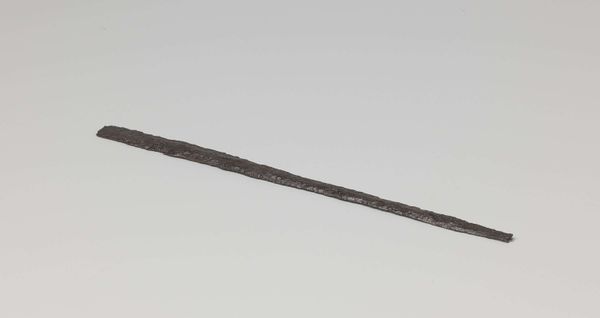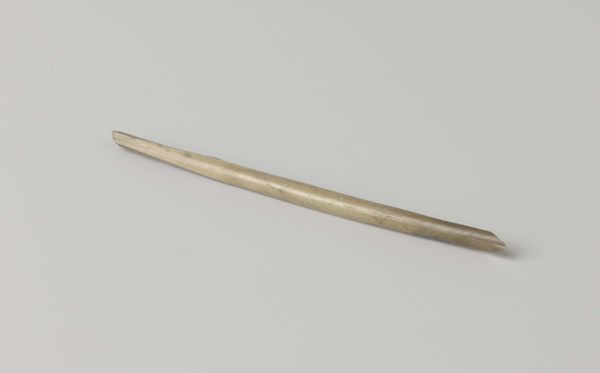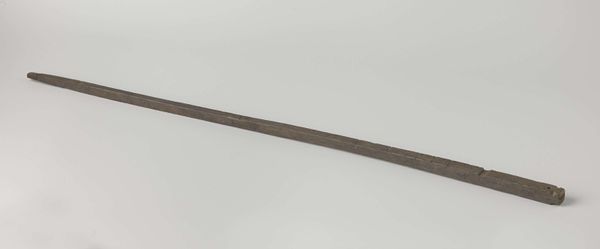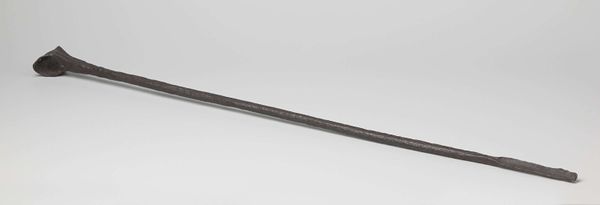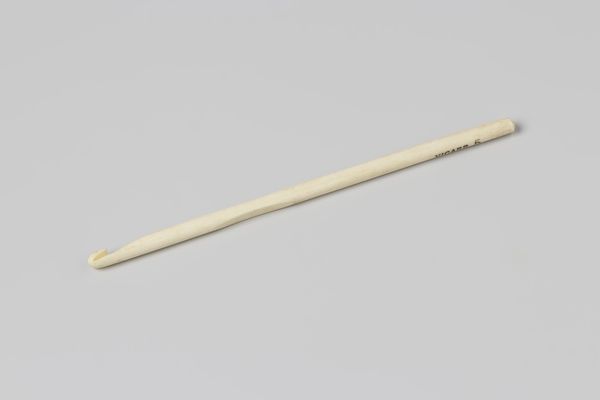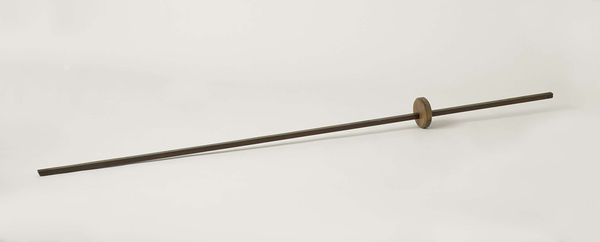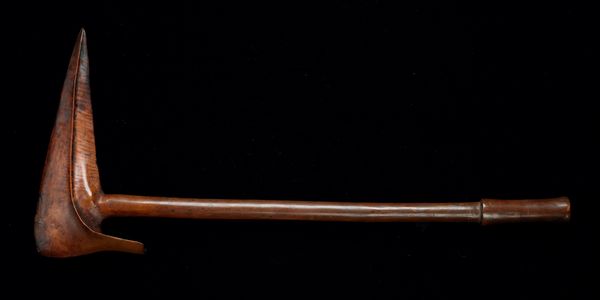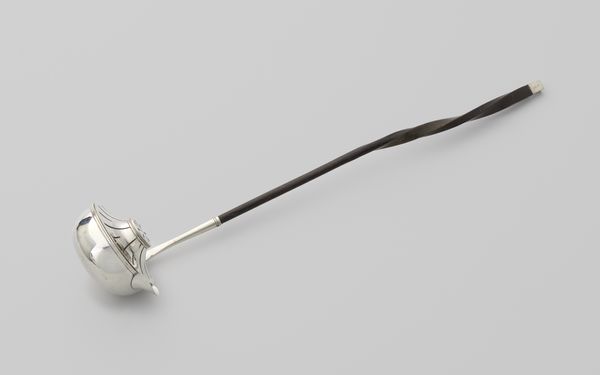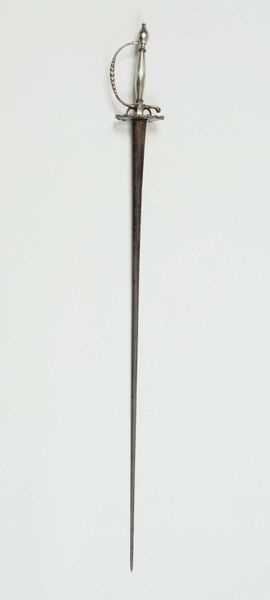
metal, sculpture
#
metal
#
form
#
sculpture
#
line
Dimensions: height 34.4 cm, width 2.7 cm, diameter 1.2 cm
Copyright: Rijks Museum: Open Domain
Editor: So, this unassuming metal object is called "Scharnier," made around 1590-1596 by an anonymous artist. Currently residing in the Rijksmuseum, it looks like a very elongated hinge. It has an almost primal starkness about it; I wonder what story it carries. How do you interpret this piece, beyond its practical function? Curator: Well, consider that a hinge, fundamentally, is about connection, and therefore, about division too. What is being joined? What is being kept apart? Its very form echoes the possibility of movement, of transition between states. The iron itself is loaded with cultural memory. Editor: Cultural memory? Could you explain that a bit more? Curator: Think about the blacksmith, the forge. The hinge represents not just utility but the transformative power of fire and human skill over raw materials. This connects us to craftspeople across centuries and speaks to alchemical processes. It's more than an object; it’s a node in a web of shared human experiences. Iron itself becomes an archive. Does that resonate with you at all? Editor: That makes me think about its durability. Something that could last for centuries, fulfilling a quiet but essential role in architecture. Curator: Exactly! And think about the domestic spaces it likely inhabited, connecting doors, chests... protecting secrets. Every opening and closing would have been a decision, a new beginning. A powerful little sculpture, isn’t it? Editor: Definitely! I won’t look at hinges the same way again. Curator: Nor will I. Thanks for the illuminating conversation!
Comments
No comments
Be the first to comment and join the conversation on the ultimate creative platform.
